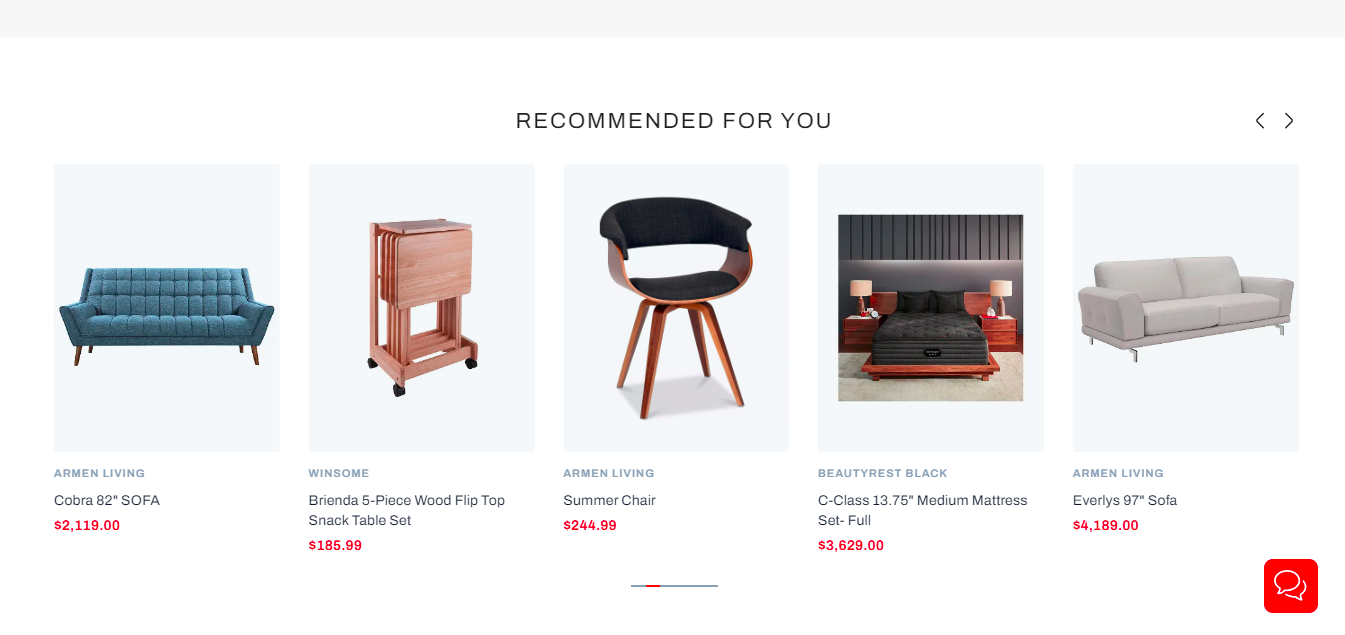
How It Works
The following logical order would be used by the algorithm to generate RFY recommendations:- Collaborative Filtering
Leverages patterns across your user base—“shoppers who viewed X also viewed Y.” - Content Signals
Analyzes product attributes (categories, tags, descriptions) to surface items with similar properties. - Session-Based Signals
Prioritizes products the user has interacted with during their current session. - Similar Items Fallback
If session data is sparse, defaults to algorithmically detected similar products.
Supported Rule Types
You can scope RFY behavior at multiple levels, each of which can override the global settings:- Global (default for all placements)
- Home Page
- Product Page
- Category Page
- Cart Page
- Search Page
Behavior for Not Logged-In Users
- With Session Activity
RFY tracks clicks/views in the current session and populates suggestions accordingly. - New Visitors
- Fallback Disabled: Widget remains hidden.
- Fallback Enabled: Displays products from your chosen fallback algorithm.
Behavior for Logged-In Users
- Returning Customers
RFY sequentially applies collaborative, content, then session logic to craft highly relevant suggestions. - Freshly Registered (No History)
- Fallback Disabled: Widget remains hidden until they interact.
- Fallback Enabled: Shows fallback recommendations to kickstart engagement.
Fallback settings are a UI-level feature. The underlying AI/ML API returns an empty result if no recommendations can be generated.
Example Scenario
- Context: A shopper lands on a designer-furniture PDP for a mid-century sofa.
- Action: RFY analyzes that user’s past views/purchases of coffee tables and accent chairs.
- Outcome: A “Recommended For You” carousel appears beneath the product details—showing complementary pieces (side tables, cushions) that match their style.